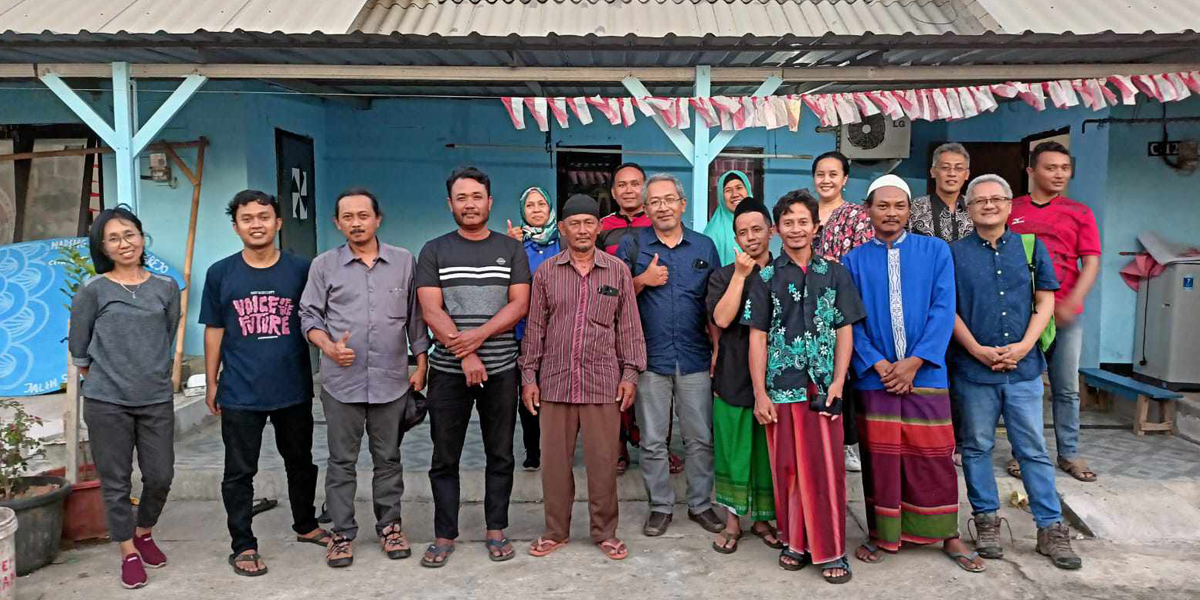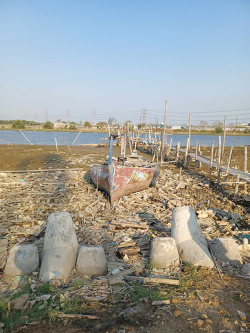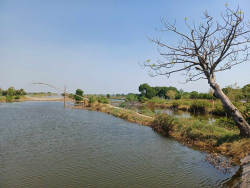Planting fish in the wrong season
09 January 2024|Cathy Rose Torres

Grappling with climate and environmental change in Central Java
Salatiga is in Central Java, around an hour’s drive from Semarang, Indonesia’s ninth most populous city. It is the base of The Institute for Social Research, Democracy, and Social Justice (Percik), JRSAP’s partner to implement the Research and Advocacy for Climate Policy and Action (RACPA) project in Indonesia, one of two project countries, along with the Philippines.
Percik’s offices in Kampung Percik are in buildings that have been relocated to preserve them from demolition, and rebuilt here, floor, walls, roof and all. Among the questions RACPA hopes to answer are “What happens when individuals, households and communities must relocate, or be relocated, because of climate and environmental change?” “How can an entire village be rebuilt, along with its social, economic and cultural fabric, from the ground up?”
Rising tides, falling earnings
A fishing village, RT6, in Tambakrejo in Semarang Regency could help provide answers. The villagers were displaced by the “normalization” project that aimed to dredge built-up sediment in the East Flood Canal to reduce the impact of flooding. Initially, the community was left to fend for themselves: staying with relatives, seeking shelter in makeshift homes beneath a bridge. Eventually, with the help of civil society groups and a ruling by the national human rights body, they secured assistance from the government, which relocated them not far from the original settlement. Free housing was provided for 97 households, but only for a period of five years. Already, two years have elapsed since then.
Every year, usually from December to March, the sea level in this part of the city rises more than a meter, flooding the village. The fishermen face changes in the seawater’s behavior. When the tides rise, they avoid going out to fish or simply stay near the coast because it feels too dangerous to venture out. At such times, they lose even the 100,000 Rupiah (around 6 dollars) to make on average each day.
The villagers have tried to reduce the impact of the banjir rob, tidal flooding, by planting mangroves, but the designation of the area for industrial use means the mangroves could be removed at any time, as has already happened to some seedlings they planted. The villagers trace the worsening of the annual tidal flooding to the building of a new settlement in another area, Tanah Mas. This is why, they say, it is important for people living on the coast to work with those living in other areas, especially those located in higher ground, to address the problem.
From planting rice to planting fish.
The river normalization project displaced the fisherfolk of RT6 in Tambakrejo, but the residents of Wonoagung in neighboring Demak Regency saw the project as a necessary solution to the annual flooding faced by their village. Wonoagung used to be a farming community, but had to convert their paddies to fishponds, switching from planting rice to “planting fish” because of the frequent flooding they experienced with seawater, which increased the soil’s salinity and made it less suitable for farming. They adapted, converting the paddies in the western part of the village into fishponds They cultivated milkfish as well as shrimp, which fetched good prices, enabling them to weather the financial crisis in the late 1990s. Back then, they made enough that they could meet their needs and still have fish left in the ponds for others to enjoy, free.

Unfortunately, the harvest failed as their shrimp stock was affected by a fungal disease linked to polluted waters. Later, global shrimp prices declined as well, prompting them to adapt yet again, importing a new shrimp variety from the United States—vannamei or Whiteleg—in the hope of better returns. It has been three years since they made the shift, and they are hoping the conditions will recover.
Meanwhile, flooding continues to plague the village, and it seems to be getting worse. Every year, around December to February, the community finds itself inundated. The water rises up to 40 centimeters (about 1.31 ft) in a house. The fish and shrimp escape from the fishponds, and the water brings skin diseases. Children find it hard to go to school since roads are flooded, even though the school itself is built on higher ground.
The wrong season
Elsewhere in Central Java, some communities are in even direr straits. One of the villagers from Wonoagung was originally from Bedono, where some fishermen had to make space inside their houses for their boats in order to prevent them from being carried away by the tides.
It is believed rising sea levels linked to climate change are a contributor to the flooding. Globally, climate change and extreme weather events threaten the lives and homes of about 216 million people, according to a World Bank report. As Pope Francis noted in Laudato Si’, a quarter of the world’s population lives on or near the coast and stand to be affected seriously by rising sea levels in the face of climate change.
But the people we speak to from Wonoagung do not mention ‘climate change.’ Instead, they have their own term: ‘salah mongso.’ The wrong season. The seasons, they observed, no longer behave as they used to—just like the sea for the fishermen of Tambakrejo. On this much, at least, the two communities are in agreement.


